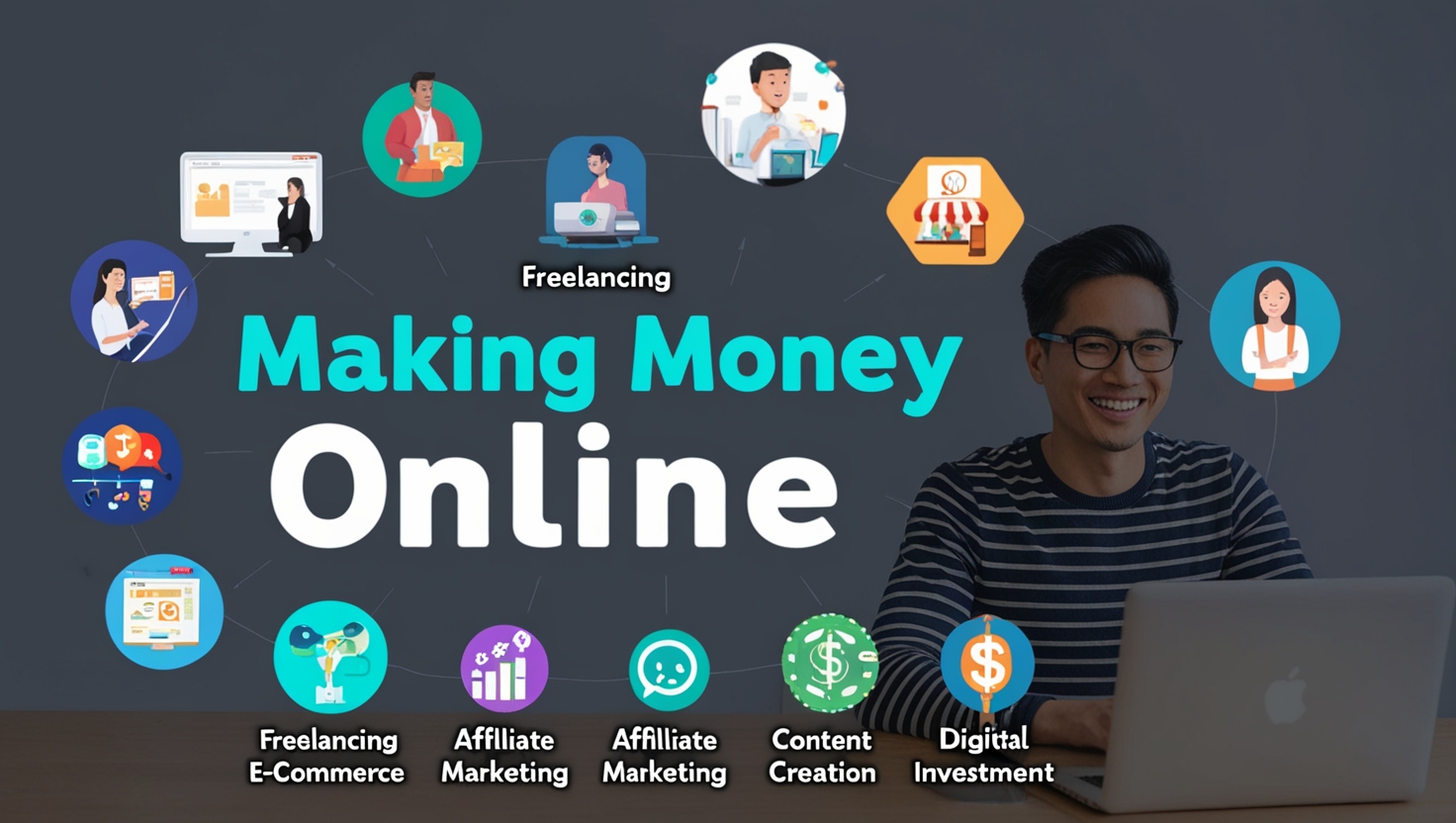Introduction: The World of Mobile Apps and Immense Opportunities
The world of mobile applications is experiencing rapid growth, with apps becoming an integral part of our daily lives. From communication and entertainment to education and business, apps play a vital role in facilitating many tasks. This immense growth creates significant investment opportunities for ambitious entrepreneurs looking to turn their ideas into profitable apps.
In this comprehensive guide, we will explore the practical steps and effective strategies to profit from creating mobile apps, from identifying the idea to marketing and growth. Whether you are an experienced developer or a novice entrepreneur, you will find valuable insights and actionable tips to help you succeed in this dynamic field.
Chapter 1: Identifying a Profitable App Idea
The first and most important step in the journey of creating a profitable app is identifying the right app idea. The idea should be innovative, meet a real need for users, and have the potential to generate revenue.
1. Searching for Problems and Seizing Opportunities
Look for problems that users face in their daily lives and try to find innovative solutions to them through an app. You can search for problems in areas that you are interested in or have experience in.
Example: Have you noticed that it is difficult to find parking spaces in crowded cities? You can create an app that helps users find available parking spaces and book them in advance.
2. Analyzing Competitors
Analyze competing apps in the market. Identify their strengths and weaknesses, and try to find a competitive advantage that distinguishes your app from others.
Example: If you are planning to create an e-commerce app, analyze leading e-commerce apps like Amazon and Noon. Identify the features they offer and the prices they charge, and try to offer better features or more competitive prices.
3. Validating the Idea
Before starting app development, make sure there is real demand for the idea. You can do this by conducting surveys, or creating a landing page to measure user interest in the app.
Example: Create a landing page that showcases the app idea and its main features, and ask users to sign up for updates about the app. If you get a large number of sign-ups, it means there is real demand for the idea.
Chapter 2: Choosing the Right Business Model
The business model is the plan that determines how the app will generate revenue. There are many different business models you can choose from, such as:
1. Free Apps with Ads
This model relies on displaying ads within the app to generate revenue. This model is very common, but it can be annoying to users if the ads are excessive.
2. Paid Apps
This model requires users to pay a fee to download the app. This model is suitable for apps that offer high value to users.
3. In-App Purchases
This model allows users to download the app for free, then purchase additional features or content within the app.
4. Subscriptions
This model requires users to pay a monthly or annual subscription fee to access the app's content or features.
5. Freemium Model
This model combines free apps and in-app purchases. The app offers basic features for free, then asks users to pay to access advanced features.
Example: A language learning app offers free lessons for beginners, then asks users to pay to access advanced lessons.
Chapter 3: App Development: From Idea to Reality
After identifying the idea and choosing the business model, it's time to start app development. You can do this yourself if you are an experienced developer, or you can hire a specialized development team.
1. Choosing the Right Platform
Determine the platforms you want the app to be available on. Do you want the app to be available on both iOS and Android operating systems? Or do you prefer to focus on one platform only?
2. Designing the User Interface (UI) and User Experience (UX)
Designing an attractive and easy-to-use user interface is critical to the success of the app. The user interface should be intuitive and easy to navigate, and it should provide an enjoyable user experience.
3. Writing the Code
Writing the code is the core part of the app development process. The code should be clean, organized, and maintainable.
4. Testing
After writing the code, the app must be thoroughly tested to ensure that it works correctly and is free of errors.
Chapter 4: Marketing the App: Reaching the Target Audience
After developing the app, it must be marketed to reach the target audience. There are many different ways to market the app, such as:
1. App Store Optimization (ASO)
App Store Optimization (ASO) is the process of optimizing the app page in app stores to increase its visibility in search results.
2. Paid Advertising
You can use paid advertising on social media or in app stores to reach a wider audience.
3. Content Marketing
You can create valuable content related to the app and publish it on a blog or on social media to attract users.
4. Public Relations
You can contact media outlets and journalists to promote the app.
5. Influencer Marketing
You can collaborate with influencers on social media to promote the app to their audience.
Chapter 5: Data Analysis and Performance Improvement
After launching the app, you should analyze the data to measure its performance and improve it. You can use data analysis tools like Google Analytics or Firebase to find out how many users are downloading the app, how many users are using the app regularly, and which features they are using more than others.
Use this data to improve the app, add new features, and improve the user experience.
Chapter 6: Monetizing the App: Effective Strategies
Now that you have developed and marketed your app, it's time to focus on monetizing it. Here are some effective strategies:
1. In-App Advertising
You can display ads within your app to generate revenue. However, the ads should not be intrusive to users.
2. Paid Subscriptions
You can offer paid subscriptions to users who want to get additional features or exclusive content.
3. In-App Purchases
You can sell virtual items or additional features within your app.
4. Affiliate Marketing
You can promote other products or services within your app and get a commission for every sale made through your app.
Chapter 7: Building a Successful Team
If you want to develop and scale your app, you will need to build a successful team. Your team should include developers, designers, marketers, and data analysts.
Choose team members carefully and make sure they have the necessary skills and experience.
Chapter 8: Expansion and Growth: Steps Towards Sustainable Success
After achieving initial success, you should focus on expansion and growth. You can do this by adding new features, expanding to new markets, or creating new apps.
Always stay up to date with the latest technologies and trends in the mobile app industry.
Chapter 9: Case Studies: Successful Arab Apps
Let's take a look at some successful Arab apps and how they achieved success:
1. Careem App
Careem is a ride-hailing app that has achieved great success in the Middle East and North Africa region. Careem's success is based on providing a reliable service at affordable prices.
2. Talabat App
Talabat is an online food ordering app that has achieved great success in the Gulf region. Talabat's success is based on providing a wide range of restaurants and convenient payment options.
3. Anghami App
Anghami is a music streaming app that has achieved great success in the Arab world. Anghami's success is based on providing a vast library of Arabic and foreign songs.
Chapter 10: Final Tips for Aspiring Entrepreneurs
Here are some final tips for aspiring entrepreneurs who want to create profitable apps:
- Be patient and persistent.
- Don't be afraid to fail.
- Learn from your mistakes.
- Always stay up to date with the latest technologies and trends.
- Focus on providing value to users.
We wish you the best of luck on your journey to creating a profitable app!




